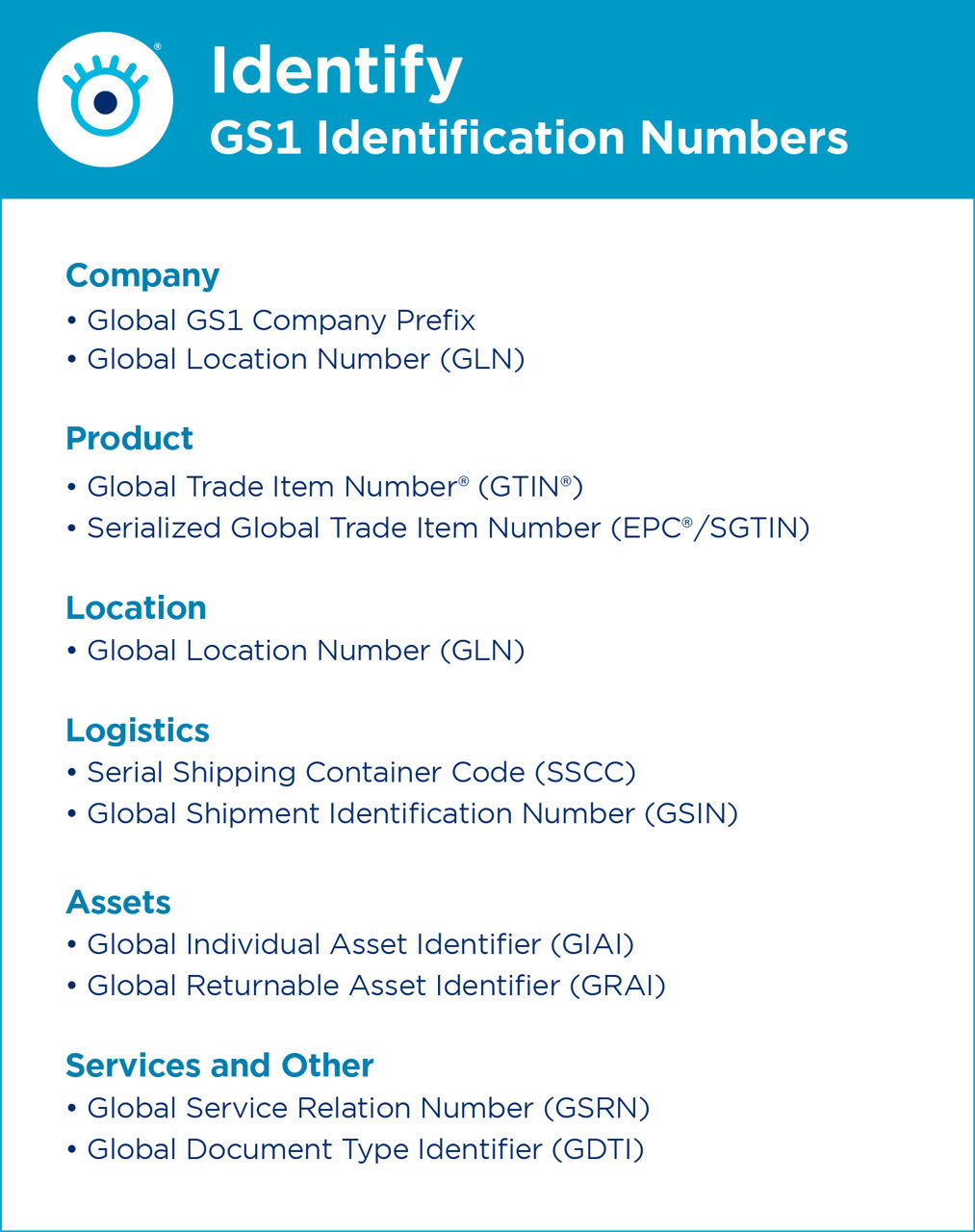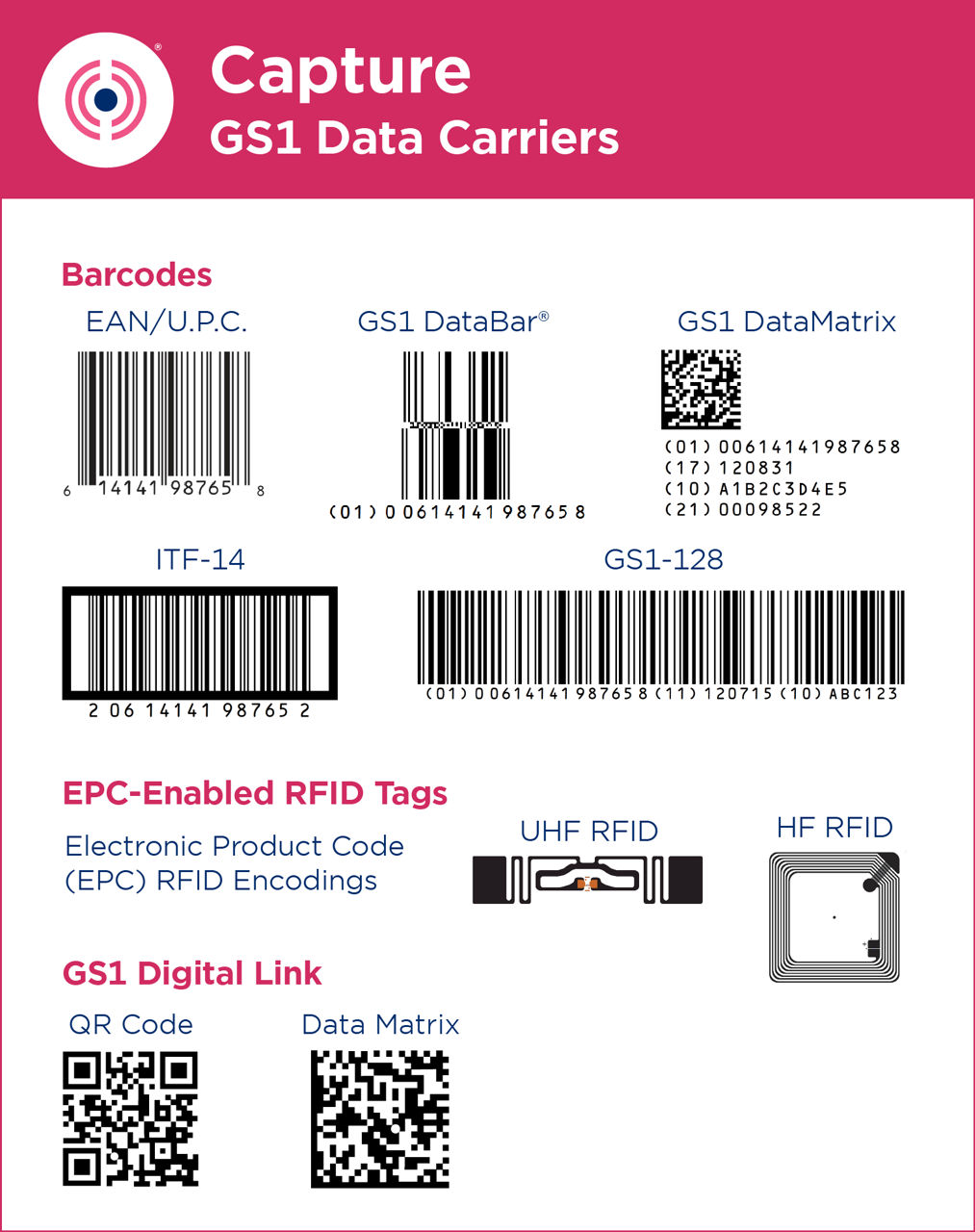Learn how this technology can help you quickly and accurately identify, capture, and share product and location data
To more efficiently locate, manage, allocate, and ship goods through their value chain—across trading partners and internal locations many companies are leveraging RAIN RFID powered by GS1 Standards. RFID tagging provides the foundation for actionable intelligence, which companies are using to improve their business processes and bottom lines.
There are many benefits of EPC-enabled RFID adoption across industries
Retail: Improving the ability to execute omni-channel business processes
- Flexible fulfillment options (buy online pickup in store and/or buy online ship from store)
- Item level inventory visibility
- Product authenticity
- Display compliancy (Planogram compliance)
- Optimizing back-to-front operations (ensuring products get to the selling floor where shoppers shop)
Healthcare: Improving patient safety and supply chain efficiency
- Asset tracking (physical equipment)
- Real-time inventory management
- Product tracking
- Patient identification and safety
Manufacturing: Helping businesses save money by better managing assets and works-in-process
- Inbound and outbound validation (shipping and receiving)
- Asset utilization and process tracking (work-in-process monitoring)
- Warehouse and/or yard management
Commercial and industrial: Assisting organizations by reducing operational risks and improving inventory and asset control
- Maintenance repair and operations
- Waste management
- Safety, security, and authentication (access control to authorized-only personnel, validation of tools and assets)
- Hazardous materials
- Inventory and asset control
- Construction management
- Product lifecycle management
When should I consider EPC-enabled item level RFID?
Review this checklist to see if EPC-enabled item level RFID technology makes sense for your organization
RFID can count and identify multiple objects simultaneously.
RFID does not require clear line-of-sight like barcodes, so there's no need to disassemble kits to count components.
RFID can "read" across long distances, keeping personnel out of harm's way.
RFID does not require a human to align and scan an object, so counting happens automatically.
RFID can be incorporated into existing business processes.
Most RFID tags now are re-writeable, or can be written in segment, so information can be easily added to an RFID tag over time.
Why use EPC-enabled item level RFID?
EPC ties its use to your existing GS1 identifiers, but the real power of EPC-enabled item level RFID comes to your business through the enhanced exchange of information about physical visibility—answering the simple question, “Where’s my stuff?”



The use of the EPC-enabled item level RFID provides an effective bridge from today’s barcode-based systems to RFID—all without losing one’s current investment in identification systems, transaction systems, or other information sharing techniques.
The technology provides the inventory visibility needed to enable business process improvements, leading to benefits such as:
- Raising SKU-level inventory accuracy from an average of 63% to 95%
- Expanding inventory count rates from 200 to 12,000+ items per hour
- Cutting out-of-stocks (OOS) at retail by up to 50%
- Increasing item availability to boost sales from 2% to 20%
- Improving inventory labor productivity by 96%
- Reducing cycle count time by 96%
- Lowering inventory risks and costs
- Enabling electronic proof of delivery
In this publication, the letters “U.P.C.” are used solely as an abbreviation for the “Universal Product Code”, which is a product identification system. They do not refer to the UPC, which is a federally registered certification mark of the International Association of Plumbing and Mechanical Officials (IAPMO) to certify compliance with a Uniform Plumbing Code as authorized by IAPMO.
Resources
*What is RAIN RFID?
Radio frequency identification or RFID is a technology that enables the sharing of data encoded in RFID tags via RFID scanners. The term RAIN RIFD specifies use of the UHF frequency band, which leverages the GS1 air interface protocol to communicate with tags.
GS1 refers to “RAIN RFID” tags in this document whenever making reference to UHF RFID tags. NOTE: Within the UHF RFID technology space, GS1 only endorses RAIN RFID implementations that are encoded per GS1’s EPC standards (which is a subset of all RAIN RFID implementations).
